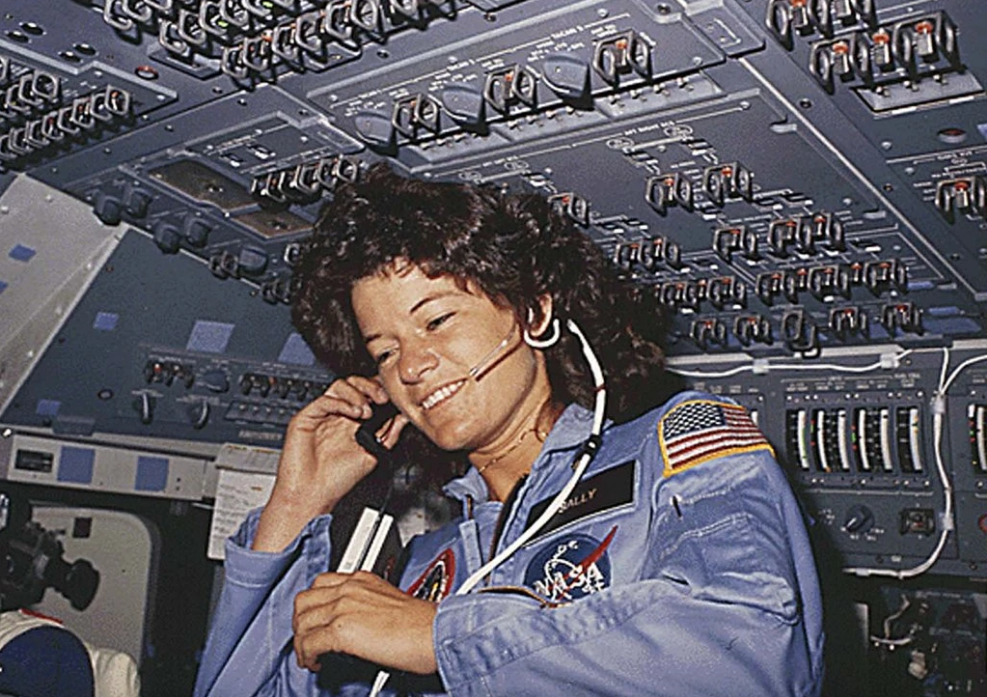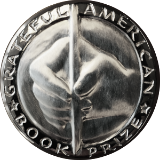June 16 — June 30, 2021
History Matters
Showing our children that their past is prelude to their future
NASA might have been conceived in 1958, but America’s astronaut corps did not accept women until twenty years later; in 1978, six out of 3,000 distaff applicants were finally chosen. Dr. Sally K. Ride was one of them; to the “suits” she had a positively perfect profile: a bachelors; a masters; and a doctorate–in physics–from Stanford University.
Ride had been pursuing a career as a professional tennis player, according to History.com, when she “answered a 1977 newspaper ad from NASA calling for young tech-savvy scientists who could work as mission specialists.”
In six subsequent years, Ride had a myriad of NASA jobs; then, on June 18,1983, she went on the of adventure of her life as a member of the Challenger crew—and became the first American woman to travel in space.
She was 32.
For more information about Ride and her legacy, the Grateful American Book Prize recommends Women in Space: 23 Stories of First Flights, Scientific Missions, and Gravity-Breaking Adventures by Karen Bush Gibson.

“No person in the United States shall, on the basis of sex, be excluded from participation in, be denied the benefits of, or be subjected to discrimination under any education program or activity receiving Federal financial assistance.” As obvious as it sounds, this only became a law of the land on June 23, 1972, with the rather bland moniker of Title IX.
According to History.com, the reason Title IX was enacted was, until its passage: “few opportunities existed for female athletes. The National Collegiate Athletic Association [NCAA], which was created in 1906 to format and enforce rules in men’s football but had become the ruling body of college athletics, offered no athletic scholarships for women and held no championships for women’s teams. Furthermore, facilities, supplies and funding were lacking. As a result, in 1972 there were just 30,000 women participating in NCAA sports, as opposed to 170,000 men.”
Eventually, the legislation evened out the opportunities; in 1972, less than 300,000 high school girls were engaged in sports; now, there are more than 2.6 million.
The Grateful American Book Prize recommends Women in Sports: 50 Fearless Athletes Who Played to Win by Rachel Ignotofsky.

When there is talk about America’s decision to declare its independence from Great Britain, it is easy to assume the Continental Congress endorsed the idea, unanimously.
But some representatives were not enthusiastic.
On June 28, 1776, Edward Rutledge of South Carolina wrote John Jay—the future Chief Justice– from New York, about his doubts and trepidations, even though he concluded that his like-minded colleagues might not be able to effectively oppose it.
Rutledge and his family had ties to England. His brother, John, studied law at Middle Temple University in London, and Edward Rutledge was a practicing lawyer in Charleston, SC, who had been admitted to the bar after studying at Oxford University and Middle Temple.
As History.com reports: “Neither Rutledge brother was eager to sever ties with Great Britain, but it fell to Edward to sign the Declaration of Independence and create the appearance of unanimity to strengthen the Patriots’ stand. At age 26, Edward Rutledge was the youngest American to literally risk his neck by signing the document.”
The Grateful American Book Prize recommends Revolutionaries: A New History of the Invention of America by Jack Rakove.

History Matters is a biweekly feature courtesy of The Grateful American Book Prize.




